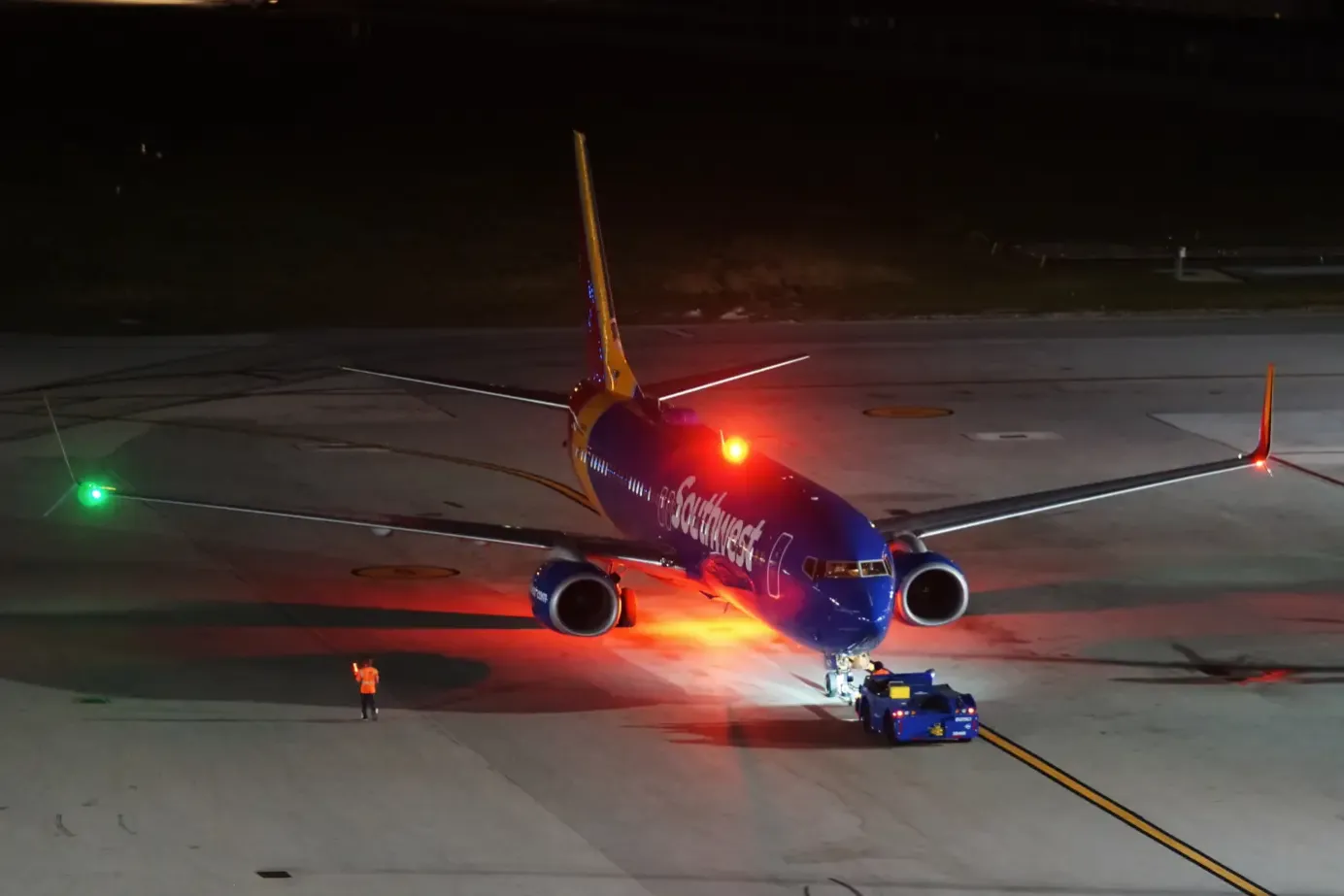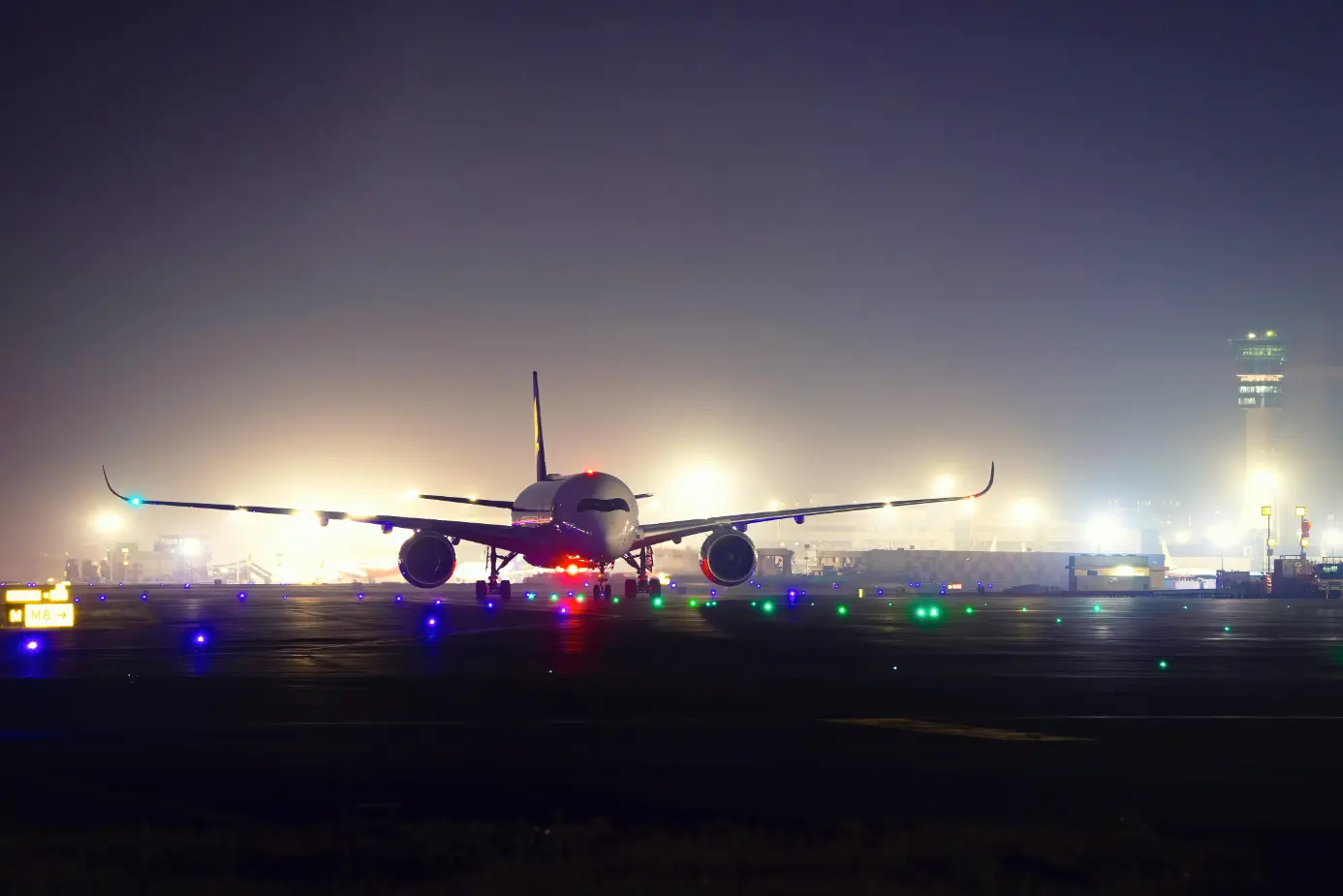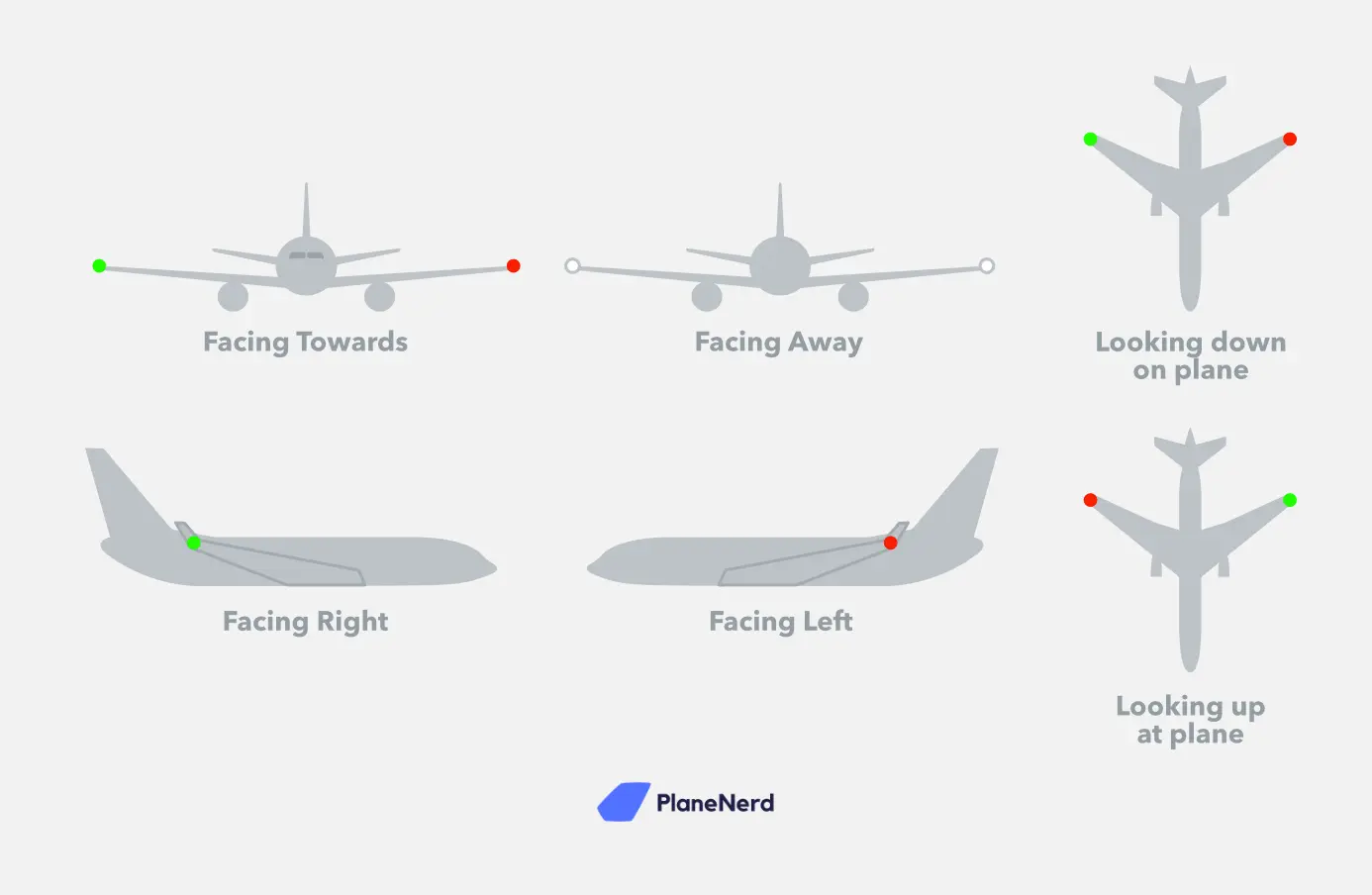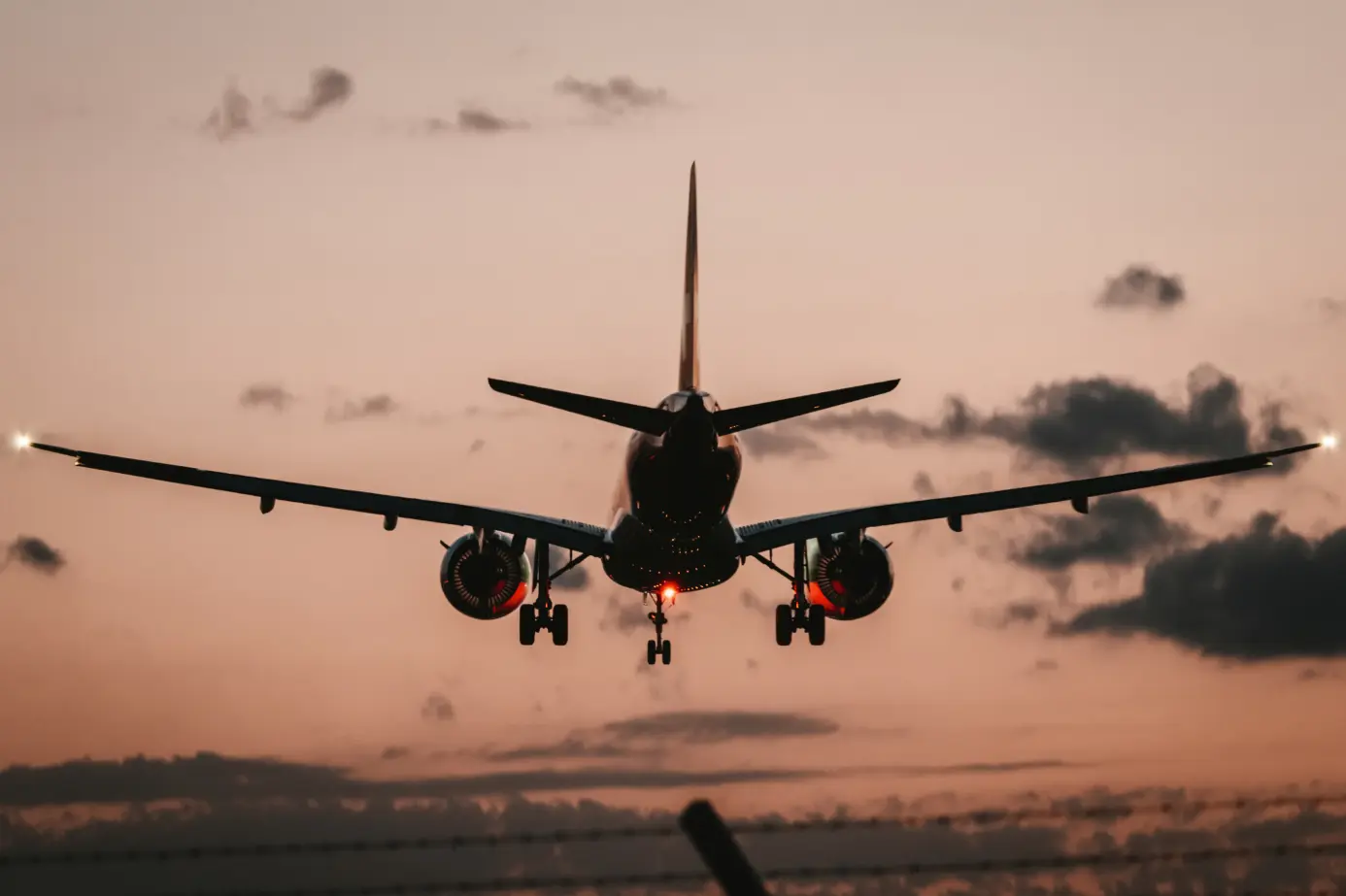
What Are the Green and Red Lights on an Airplane?
Are you curious about what the airplane's green and red lights represent? Learn everything there is to know about airplane navigation lights.
Table of Contents
If you've ever seen an airplane in the night sky, you might have noticed a green or red light on the wingtips. What are the green and red lights on a plane for?
Airplanes have green and red lights for navigational purposes. They are in place to improve the visibility of the aircraft to other pilots and the air traffic controllers in the tower to reduce the risk of collision.
Navigational lights are pretty simple in their design yet have a range of purposes. The rest of this article will tell you everything about green and red lights on an aircraft.
What Are the Green and Red Lights on a Plane for?
The green and red lights on a plane increase the visibility to other pilots and air traffic control personnel on the ground. In addition, it helps to determine which way the aircraft is pointing relative to the observer. When observing the aircraft facing you, a commercial airliner will have a green light on the left wingtip and a red light on the right wingtip.
The red and green lights are always on. Also during bright daylight.
Why Do Airplanes Have Both Green and Red Lights?
The reason for the airplanes having both colors of lights to increase visibility is twofold. First, the different colors are more noticeable than if the plane just had one set of colored lights. The different colors and the blinking of other lights help the airplane stand out in a dark sky. These green and red light indicators are immediately recognizable to pilots and air control towers.

The second reason for the dual-colored lights is to distinguish the airplane from other aircraft types, which also use lights to note their presence in the sky. Drones and weather balloons, for example, typically only have one set of flashing lights.
In addition, green and red light are two colors easily distinguishable and are the easiest to see at night for the human eye.
Historical Precedence for Red and Green Lights
Another interesting reason commercial aircraft use red and green lights is that these colors mirror the configuration of watercraft. Back in the 19th century, seamen recognized that adding colored lights - red and green, specifically - helped to make them more visible to other boats and ships.
In the advent of air travel, aviators applied the same principle: a set of red and green lights would make their airplanes more visible, creating a safer travel experience for pilots and travelers.
How Do the Lights on an Airplane Help Visibility?
Not only are the lights on an airplane significant in making the plane more noticeable. To anyone familiar with aircraft, these lights can tell you exactly which direction the plane is facing relative to you, even in low-visibility conditions.
Since the red and green lights are fixed on the plane, you can see which direction the plane is facing relative to you in the dark. If you look up at a dark sky and see, for example, only the red light, you can conclude that the plane you are looking at is pointing to the left. If, on the other hand, you can only see a green light, the aircraft is pointing to the right and flying in that direction.
Additionally, white flashing strobe lights are placed on the rear of the plane's wings. This means that if you can only see these two white lights, you are looking at the plane from behind, which is therefore flying away from you. Additionally, if, from your perspective, the aircraft's green light is to the left and the red light is to the right, then the plane is headed in your direction.

Other Lights that Pilots Rely on
Pilots also rely on various other lights to keep them and their passengers safe. These lights all serve the purpose of increasing visibility or helping the pilot land.
Taxi Lights
As the name suggests, the taxi lights illuminate the taxiway so that the pilots can see where they're going. Typically placed on the nose gear strut and wing, they work in cooperation with lights on the taxiway to help pilots see where they're going.
Landing Lights
The most significant visibility factor for pilots at night is landing lights. These high-intensity lights sit on the wing or nose gear strut and point downwards to shine a light on the runway. These lights are essential in helping the crew determine where they're supposed to land and touch down safely. These landing lights are particularly bright, and as such, they also help increase the plane's visibility to other pilots.
For some newer aircraft, the Alternative Landing Light System pulses left and right lights alternatively to improve visibility for the plane when it is approaching the runway to land.
Beacon Lights
Also called anti-collision lights, beacon lights improve the visibility of the aircraft, and warn other pilots and ground crew.
These red lights flash in an alternative pattern as a warning signal to anyone nearby, letting them know that the aircraft is active and in operation and that they should stay away.

Wing Inspection Lights
Pointed back towards the wing and engines, these lights help the ground crew and flight crew ascertain whether there's any ice formation on the wings. The presence of ice on an aircraft's wings is dangerous and would indicate to the crew that the plane is not flight-ready without deicing.
Although mainly used on the ground before a flight, pilots can also use the wing inspection lights during a flight if needed.
Runway Turnoff Lights
The runway turnoff lights are similar to landing lights, but they aren't as bright and are typically positioned near the airplane's nose at an angle pointing left and right to brighten up the exit of a runway. Typically located on the nose strut, runway turnoff lights are also helpful for a pilot during sharp turns on the taxiway.
Searchlights
On certain military or rescue aircraft types, searchlights illuminate objects on the ground or in the water. These are particularly useful in locating survivors following a natural disaster, but the crew can also use them to look for other missing objects or persons.
Logo Lights
Although they're not required by law, logo lights have become a pretty standard feature of commercial airplanes. Not only do they increase the aircraft's visibility, but they also help other pilots and ground crew quickly identify the plane.
Final Thoughts
There are lots of different lights on airplanes, but they all serve specific purposes, whether it's to identify the direction of an aircraft, light up the plane at night, or aid the pilot and flight crew with landing safely.
The red and green lights help observers identify the direction from which they observe the aircraft. Other lights installed on the aircraft help increase visibility and aids the pilots in landing and taxiing.
Inspired by the mariners of the 19th century, the red and green navigation lights from boats and ships are also used on aircraft today.
Curious to learn more about modern aviation? Learn about how fast commercial aircraft fly, how high they fly, and how many RPM a jet engine spins.
Planenerd Newsletter
Join the newsletter to receive the latest updates in your inbox.






